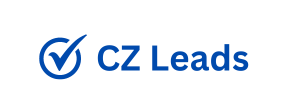Data analysis is the process of inspecting, cleaning, transforming, and modeling data with the goal of discovering useful information, drawing conclusions, and supporting decision-making. In today’s data-driven world, businesses, governments, and organizations rely on data analysis to solve complex problems, forecast trends, and improve operational efficiency. A robust data analysis application typically integrates data from various sources, applies statistical methods, and generates insights to help stakeholders make informed decisions.
Purpose and Scope of the Application
The purpose of this data analysis application is to provide users with a comprehensive tool to analyze large datasets, identify patterns, and generate actionable insights. The application is designed to handle different types of data, whether structured or unstructured, and supports various analytical methods such as regression analysis, machine laos email list learning, and statistical testing. By offering both basic and advanced analysis features, the application can cater to users across different fields, from small businesses to large enterprises.
Data Collection and Integration
One of the key features of the data analysis application is its ability to collect and integrate data from multiple sources. The application supports importing data from CSV files, databases, APIs, and even cloud storage services. It also has built-in connectors for popular platforms like Google Analytics, Salesforce, and social media channels, allowing for seamless data integration. Once the data is imported, it is pre-processed to handle missing values, outliers, and inconsistent formats to ensure that the analysis results are reliable and accurate.
Data Exploration and Visualization
Before diving into complex statistical modeling, it is important to explore and visualize the data to understand its structure and underlying patterns. This application offers a rich set of visualization tools, including histograms, scatter plots, heatmaps, and time-series graphs. These visualizations help users identify trends, detect correlations, and gain insights into the relationships between different variables. Interactive dashboards also allow users to filter and drill down into specific subsets of the data for deeper analysis.
Advanced Analytical Techniques

For more in-depth analysis, the application includes a range of advanced techniques. Users can perform regression analysis to model relationships between variables, conduct hypothesis testing to validate assumptions, and apply machine learning algorithms like decision trees, clustering, and neural networks to uncover hidden patterns. The optimize texts for search engines application also offers model evaluation tools, such as cross-validation and A/B testing, to assess the accuracy and performance of predictive models. These features enable both novice and expert analysts to extract valuable insights from complex datasets.
Reporting and Decision Support
The final step in the data analysis process is to generate reports and provide decision support based on the findings. The application allows users to cg leads create detailed, customizable reports that summarize the key insights, statistical tests, and visualizations. Additionally, decision support tools such as dashboards and real-time alerts help businesses monitor key performance indicators (KPIs) and make timely decisions based on the latest data trends.

